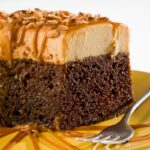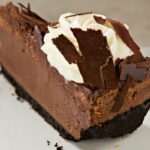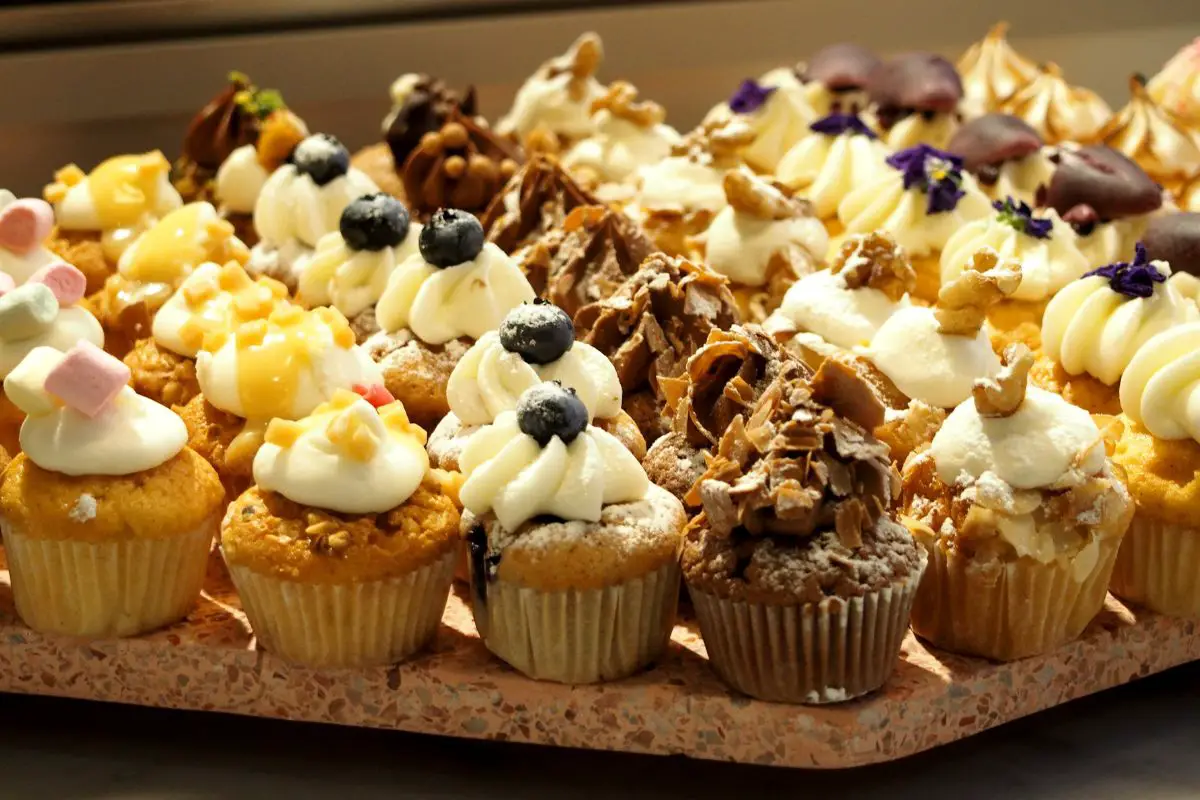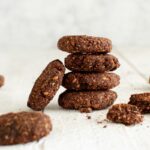We’ve all been there, sometimes you are chomping down on your favorite white chocolate brand and suddenly a moment of existentialism hits you – what actually is white chocolate?
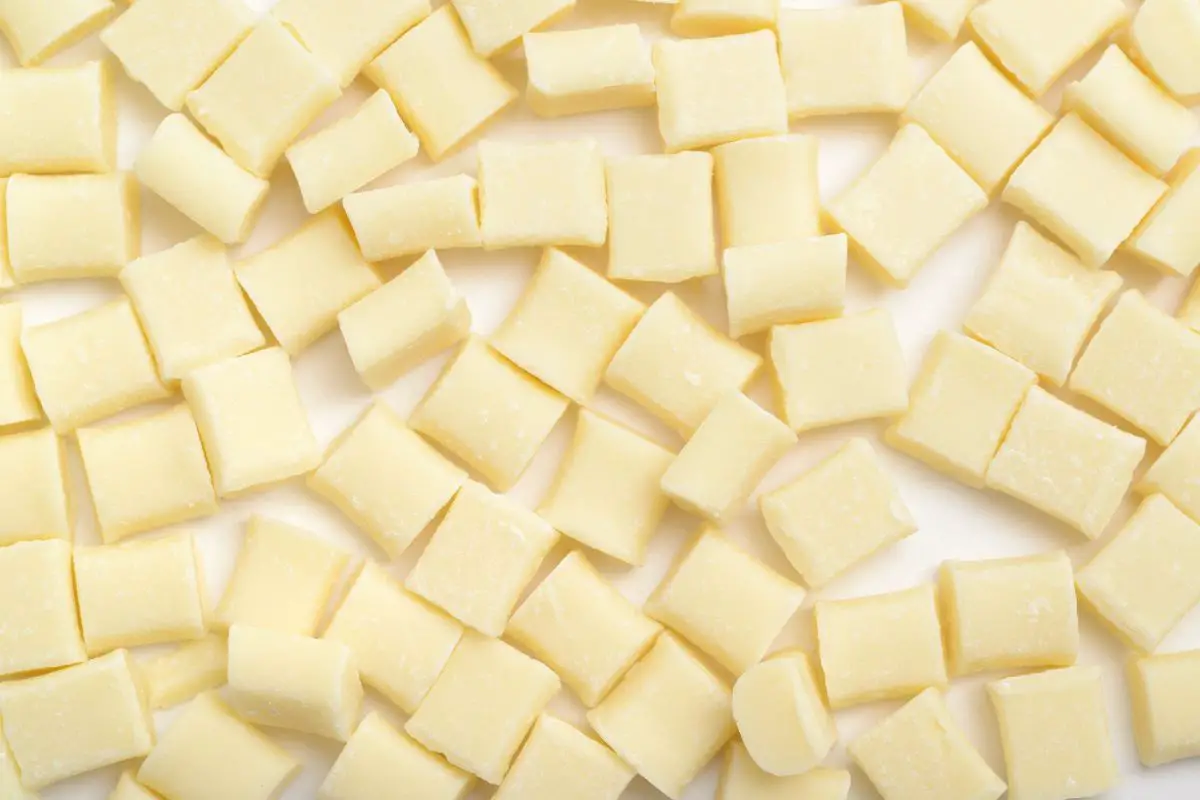
It’s happened to us all before and, to be honest, it’s a valid question. Considering that most chocolate is actually brown or dark colored, why is white chocolate white? Is white chocolate even chocolate?
Don’t worry we get it, and we’re here to quell anymore existential crises. Interestingly the answer covers both legal and culinary grounds, so read on to find out.
What Is White Chocolate?
It might make sense to define what normal, brown, milk chocolate actually is. Milk chocolate is in fact brown because of cocoa.
Cocoa nibs and sprouts are ground and disperse tiny particles of cocoa into the cocoa fat which produces chocolate liquor.
Stop here and you would have cooking chocolate which has less sugar so bakers have more control over sugar content.
J.S. Fry basically invented the modern chocolate bar by adding cocoa butter and sugar into chocolate liquor and adding condensed milk.
This is what basically created the modern milk chocolate bar, plus some tempering of the chocolate. It is the cocoa particle created by grinding roasted cocoa nibs and sprouts that gives chocolate its notorious brown color.
White chocolate is just cocoa fat mixed with sugar. That’s it. Because it doesn’t contain any actual cocoa particles, only the fat from the cocoa, it isn’t brown at all. So, is it still chocolate?
Is White Chocolate Actually Chocolate?
It still contains milk, sugar, and cocoa butter, but has no cocoa solids, which is important.
Each type of chocolate, of which there are four, are subject to their own legal requirements in order to actually be called chocolate.
In the same way Whiskey has to forgo lots of legal procedures to actually be called Whiskey.
To legally be called white chocolate, all it has to contain is cocoa butter and dairy milk, that’s it. As a result white chocolate often has other ingredients in it that bring flavor.
The FDA rules that to be legally marketed as white chocolate it must contain at least 20% cocoa fat and 3.5% milk fat and at least 14% total milk solids.
This basically means that there is around 7.5% of a white chocolate bar’s makeup that can be messed with by chocolate makers and manufacturers.
This last 7.5%, although it’s rarely this specific, will usually be a combination of what chocolatiers call ‘fillers’. Usually something like lecithin, flavorings, whey products, and often more powdered milk.
Fundamentally, white chocolate is purely milk and cocoa butter, it has no cocoa solids or chocolate liquor at all.
By legal definition it is ‘white chocolate’, so it is in fact still chocolate, but also by legal definition it is not ‘milk chocolate’.
The two, well actually the four possible types of chocolate, are actually all separate things rather than varieties of one single thing.
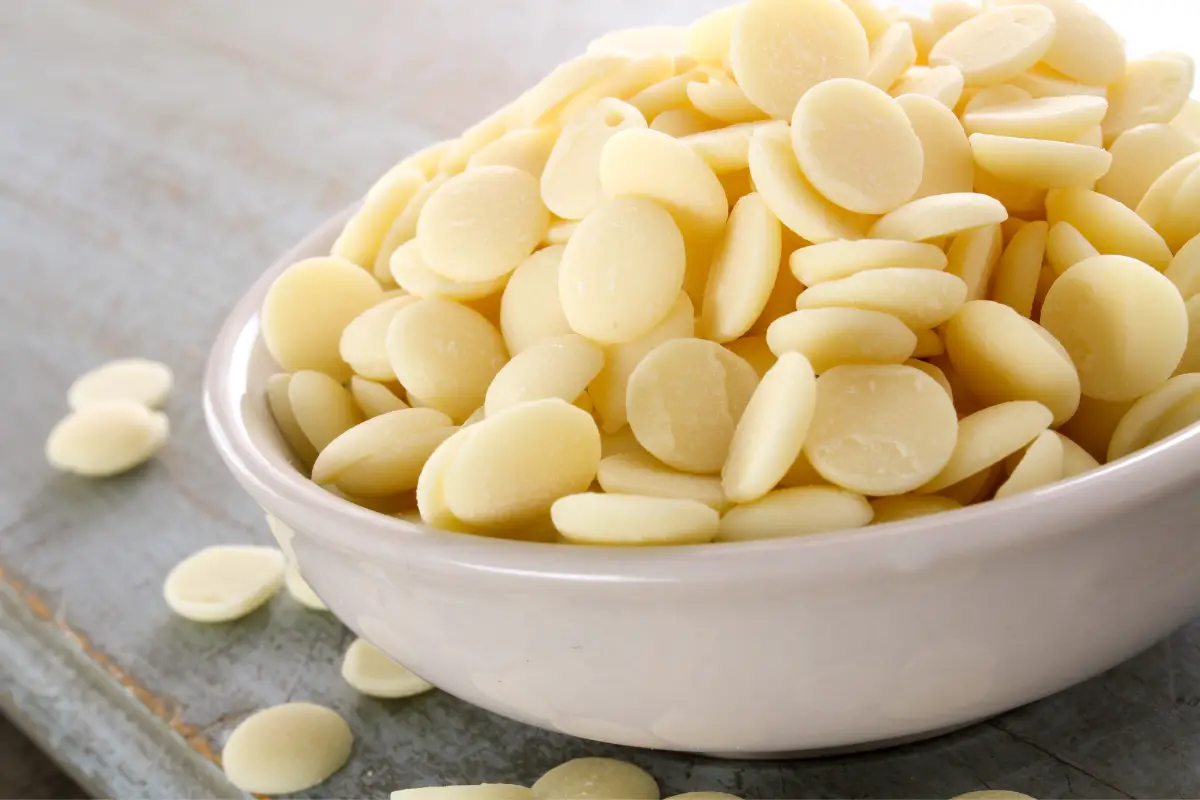
What Is The Flavor Of White Chocolate?
Well, this is the thing, as white chocolate doesn’t contain cocoa solids, it doesn’t have the roasted ‘chocolatey’ flavor as a result of the roasted cocoa solids.
On the other hand, dark chocolate tastes quite ‘bitter’ because it is mainly just cocoa solids. Consider that white chocolate is the other end of this so basically tastes like ‘nothing’ and is in fact more of a textural thing.
You can expect most white chocolate to taste kind of like butter. But as all you need to be legally called white chocolate is cocoa butter and milk, white chocolate is often flavored with other things.
For instance, the most common flavoring is to add vanilla to white chocolate, whereas milk chocolate doesn’t have any vanilla in it usually.
In fact the cocoa butter is what brings most of that natural chocolate flavor to white chocolate. The thing is that cocoa butter is really expensive.
Chocolatiers have to compete with the likes of cosmetics agencies who also have a high demand for the plant fat.
As a result most white chocolate will have quite low, usually the bare minimum, level of cocoa butter necessary in order to legally label it as white chocolate.
Some brands of white chocolate will even go lower than the legal requirement to save on costs and will then simply relabel it as something else.
This brings us onto different types of white chocolate.
The Different Types Of White Chocolate
Commercial White Chocolate
So most white chocolate you will encounter in the grocery store, such as Cadbury’s own white chocolate, will seek only to meet the basic requirements to have this label.
Most commercial white chocolate will be made up of 50% sugar, 30% milk and 20% cocoa butter, generally. Most of the flavor here will come from other places.
Craft White Chocolate
Those who are obsessed with chocolate and its manufacture will instead seek to get as much flavor from its parts as possible.
In craft chocolate you can get the best idea of what cacao butter tastes like as they seek to draw the most flavor out of it. Most craft chocolate will be around 35% sugar, 25% milk, and 40% cocoa butter.
White Coating
What chocolatiers call white coating is not in fact chocolate at all and actually doesn’t contain any cocoa products, let alone cocoa fat.
It’s usually 50% sugar, 15% milk, and 35% hydrogenated vegetable oil like palm oil. All the flavor comes from other things that are cocoa.
Final Thoughts
Put simply, white chocolate is still chocolate. It is just your normal chocolate product but contains no cocoa solids, and as a result loses its dark color and most of its flavor.
Most manufacturers endow other flavors into white chocolate that is usually vanilla or something along those lines.
Indeed, certain brands of commercial chocolate contain no cocoa products and lose their legal right to actually call themselves ‘chocolate’.
- How To Make Honey Butter - July 4, 2023
- How To Make Meringue - July 3, 2023
- What Is Shortening? - July 3, 2023





